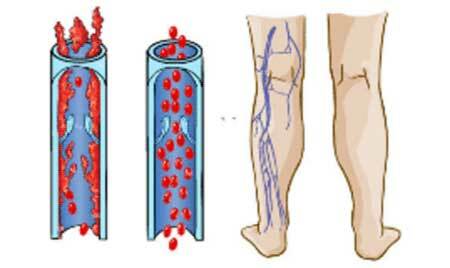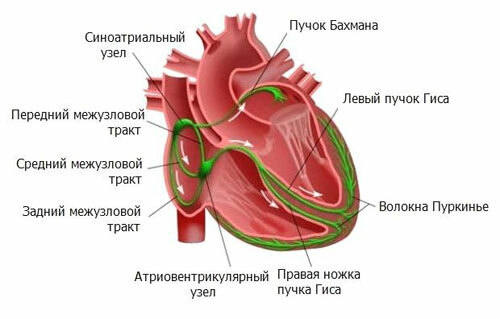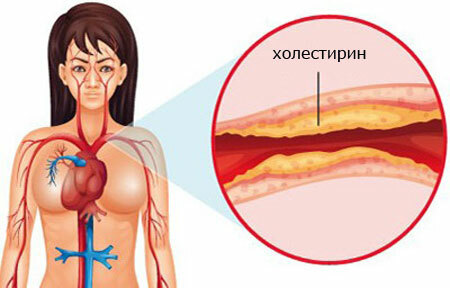Edema is a condition in which fluid in the body in an increased amount accumulates in the intercellular space, resulting in an increase in the volume of a particular part of the body. The swelling of the feet in women is a fairly common complaint, with which they turn to the doctor( approximately 25% of cases).
This is due to the fact that this symptom is clearly visible, is a cause of concern for possible diseases, and also delivers cosmetic discomfort, especially for women wearing shoes with heels.
Contents
- 1 Reasons for foot swelling in women
- 1.1 Blood circulation disorders
- 2 Diagnosis of foot swelling
- 3 Treatment of foot swelling in women
- 4 What to do with swelling of the legs?
- 4.1 Physical exercises
- 4.2 Medications
- 5 Prevention of edema of the legs
Reasons for foot swelling in women

The causes of edema of the legs in women are very diverse. But in the first place - violations in the venous bed, which must immediately be excluded or confirmed. This approach is justified, since it helps to minimize errors associated with underestimation of threatening or developing thrombosis.
If the time is not diagnosed this complication, then the probability of limb amputation is high, and this is already a disability. Nevertheless, venous disturbances are not the only cause of puffiness. Many diseases manifest themselves with this symptom. In addition, they can build up on venous causes.
Therefore, a detailed examination of the patient is always conducted to identify all possible causes. Only knowing reliably why the legs of women swell, you can know what to do.
Major disorders that cause foot swelling:
- Increased permeability of the capillary bed.
- Presence of an obstruction of venous or lymphatic outflow of fluid from tissues.
- Decreased oncotic( protein-mediated) blood pressure.
Major diseases leading to edematous syndrome may be the result of vascular, musculoskeletal or internal organ damage:
- Chronic heart failure
- Glomerulonephritis
- Renal amyloidosis
- Diabetic renal damage
- Lupus erythematosus, systemic form
- Lymphogranulomatosis( oncohematological disease with lymph node involvement)
- Varicose disease
- Hereditary deficiency of venous valves
- Acute thrombosis and postthrombotic condition
- Tumors compressing the veins from the outside
- Protein deficiency due to protein deficiency in the food( starvation, unbalanced nutrition)
- Insufficient release of pancreatic enzymes
- Enteric fibroid gluten
- Removing part of the intestine( resection)
- Liver diseases in which protein synthesis is disrupted
- Recurrence of the erysipelas, causing elephantiasis
- Filariasis, leading to compression of lymph vessels
- Lymphostasis after injuries
- Quincke edema( allergic reaction to oFROM airways and shortness of breath)
- defeat of large joints in osteoarthritis, infectious or reactive arthritis
- Hypothyroidism.
But this list is not exhaustive. So why are women swollen legs?
In addition to the factors listed above, some drugs, in particular nifedipine, may predispose to this condition. This agent increases the pressure in the tissues due to the direct attraction of the liquid.
Another reason for is swelling of the legs in pregnant women. It can be considered a variant of the norm if they appear in the evening and do not combine with a protein in the urine or an increase in pressure in the arterial system.
Otherwise, it is about pre-eclampsia - a formidable complication of pregnancy, requiring immediate assistance.
Circulatory disturbance
Venous insufficiency is the most common cause of edematous syndrome due to impaired blood circulation. This is one of the most important causes of leg edema in elderly women( up to 80% of cases).Puffiness develops due to:
- Decreased venous tone
- Structural vein change
- Inflammation unrelated to microbes
- Insolvency of valves
- Damage to skin due to leukocyte aggression.
A less common cause of circulatory disorders leading to edema is heart failure. In this case, the fluid leaves the tissue because the heart does not have time to pump it - its systolic and diastolic functions are violated.
Diagnosis of foot swelling
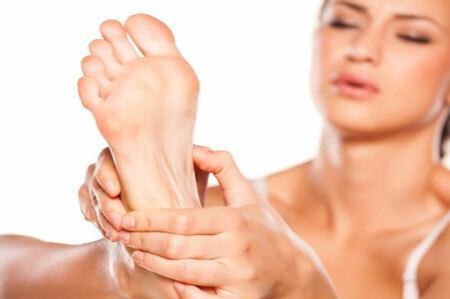
In the primary diagnosis of edematous syndrome, 8 questions are important. With their help, the doctor manages to guess the most probable cause of this condition. Further diagnostic search is based on the confirmation or denial of a possible causative disease.
We present the questionnaire:
1. When did edema appear for the first time?
- Acute beginning is typical for deep venous thrombosis
- After 40 years there are swelling associated with compression of the lymphocytes
- During puberty, the girls most often develop lymphatic idiopathic edema
- Swollen legs in the evening during pregnancy( this may be an option and the norms and pathologies- differences see above)
2. Are they accompanied by pain in the leg?
- Pain only when palpated, which is absent at rest, usually indicates swelling of adipose tissue( lipedema)
- Acute severe pain occurs with thrombophlebitis, joint and lymphatic system diseases.
3. Does the puffiness decrease during the night?
- Chronic puffiness in venous insufficiency decreases after sleep, especially if the legs are given a raised position
- For lymphatic edema, there is no such regularity or it is not very pronounced.
4. Is there dyspnea in a horizontal position or with physical exertion not exceeding the usual?
- A positive response is an occasion to reflect on the cardiac disease that led to the inadequacy of the heart muscle
5. Has there ever been a place for kidney infection or episodes of urinary protein appearing in the urine?
- If the answer is "yes", then kidney pathology
should be excluded. 6. Was jaundice or hepatitis in history?
With a positive response, the probability of liver failure is high, which is characterized by a low level of protein formation and, accordingly, increased plasma capacity to leave the vessels and accumulate in tissues.
A similar situation is observed with regular abuse of alcohol.
7. Has the weight of , the appetite and the nature of the intestinal function changed lately?
If there is a change in at least one parameter, then the most likely cause is the pathology of the digestive system, in which the absorption of protein in the intestine suffers.
8. Is there any treatment with any drugs?
The use of testosterone, progesterone, estrogen, methyldophe, clonidine, nifedipine, nonsteroid and antidepressants is indicative of the use of medicinal edema.
In addition, it is necessary to focus on other diagnostic criteria for edematous syndrome, which can be identified by an objective examination of the patient:
- Acute edema on one leg, accompanied by pain, often indicates acute venous thrombosis.
- With lymphatic development, the tex slowly develops, does not leave after pressing the fossa, is located on the back of the foot, does not pass after sleep or elevated leg position. The diagnosis is clarified with the help of lymphography.
- Gradually developing edema leaving a fossa, and passing after a dream, indicates a chronic failure of the venous system.
- Bilateral, slowly developing edema is usually a symptom of heart failure or medication.
- If the leg is swelling on the ankle and on the front of the leg, then most often it is associated with hypothyroidism.
Thus, a woman who has consulted a doctor for edema is prescribed a series of examinations to clarify the cause of this condition:
- General clinical urinalysis
- General clinical study of peripheral blood
- Determination of creatinine and protein in the blood
- Ultrasonic examination of the vessels condition
- Ultrasonic scanning of the knee
- ElectrocardiographyEchocardiography and some others.
Treatment of edema of the legs in women

Treatment of edematous syndrome is carried out by a specialist whose profile is attributable to the causative disease. Since the most frequent cause is chronic venous insufficiency, the algorithm for treating this pathology will be considered in detail. It is based on a combination of 2 methods - drug and compression.
Medical therapy normalizes the structure and functioning of the venous wall, and also reduces the aggressive action of leukocytes, which leads to trophic skin changes.
The most effective drug is Dextralex( representative of phlebotonics group).Its use was recommended in 2007( including for the treatment of lymphatic edema) after a series of clinical randomized trials( the drug proved to be effective at the highest level of evidence).
Detralex leads to a decrease in the severity of such symptoms as:
- Heaviness in the legs;
- Feeling of heat;
- Pain;
- Edema;
- Trophic ulcers, whose diameter is not more than 10 cm.
Compression therapy is the use of preventive or curative anti-varicose jersey. He is selected individually, focusing on the pressure exerted in the area above the ankles. Before wearing it is necessary to exclude possible contraindications:
- A significant degree of obliteration of the arteries of the legs;
- Osteoarthritis of the knee or ankle;
- Summer;
- Individual intolerance.
In 10-15% of cases, surgical treatment may be required. It is indicated if the above methods of treatment are ineffective or in the advanced stage of the disease. The operation is performed by a phlebologist( angiosurgeon).
What should I do if my feet are swollen?
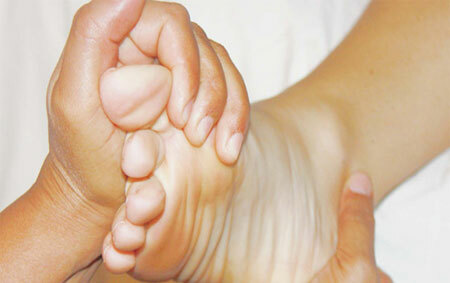
Folk methods for the treatment of edematous syndrome can be recommended only if it is caused by chronic venous insufficiency or iodine deficiency leading to hypothyroidism. And even in these cases, folk treatment is complementary to traditional therapy - it can not be recommended as an independent method.
When veins are inadequate, tincture or chestnut broth is recommended. This plant contains certain chemicals( bioflavonoids) that strengthen the vascular wall. For the manifestation of therapeutic properties, tincture or decoction should be continued for 3-4 months. Then a break is made and the course of treatment is repeated.
Hypothyroidism requires not only the intake of hormonal drugs, but also the use of iodine in food and water:
- Seafood;
- Iodized water;
- Iodized salt;Sea cabbage, etc.
Physical Exercises
Physical exercises are effective at the initial stage of varicose veins. Their task is to improve the outflow through the veins by reducing the muscles of the lower leg and thigh. Therefore, the recommended complex includes:
- Rising to the socks and lowering;
- Rotational movements in the ankle;
- Walking on site or at a distance;
- Flexion and extension in the ankle;Simulation of cycling, etc.
If edema is caused by myocardial insufficiency, then heavy loads should be avoided. The best option in this case is the usual measured walking. It has an easy training effect on the heart muscle, without leading to its ischemic damage.
Medications
The choice of medication for the elimination of swelling depends on the specific disease:
- Phlebotonics - with venous insufficiency( strengthen the vein wall);
- Antiaggregants - to reduce the risk of thrombosis;
- Thyroid hormones - with hypothyroidism;
- Cardiac glycosides - in case of heart failure;
- Colchicine, unitiol - in renal amyloidosis;
- Sugar-reducing drugs - with diabetic nephropathy;
- Antihistamines and corticosteroids - with Quincke's edema, etc.
Prevention of edema of the legs
 Prophylaxis of edema is multifaceted. The list of reasons that determine them is very huge. Therefore, in order to prevent this syndrome, it is recommended:
Prophylaxis of edema is multifaceted. The list of reasons that determine them is very huge. Therefore, in order to prevent this syndrome, it is recommended:
- Avoid prolonged immobility of the legs;
- Regularly eat with daily food and water iodine;
- To eat right and balanced;
- Avoid infectious processes( heat clothing, hygiene, etc.);
- Wear anti-varicose stockings with weathered heredity;
- Do not abuse alcohol-containing beverages;
- Wash hands to reduce the risk of hepatitis A( jaundice);
- Do not get carried away with sweet and flour products;
- Take aspirin with a high risk of thrombosis, etc.

